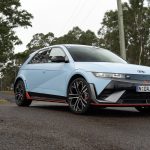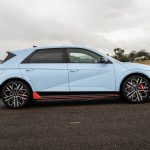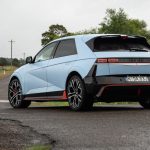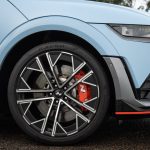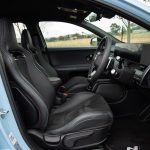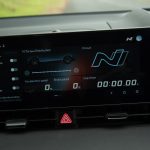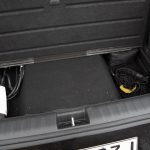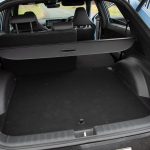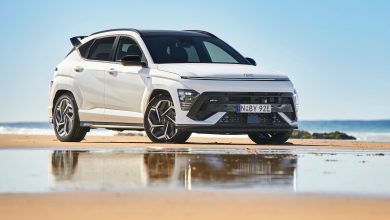While the standard IONIQ 5 has already proven to be a tech-rich and efficient family-mover, the N variant cranks up the intensity with serious track-ready hardware, aggressive tuning, and some wild theatrics that are unlike anything else in the EV world right now.
It’s big, heavy, and very different to your usual Hyundai N model, but it makes a compelling case for itself with its sheer capability and sense of fun. The price isn’t too bad either, once you factor in the performance.
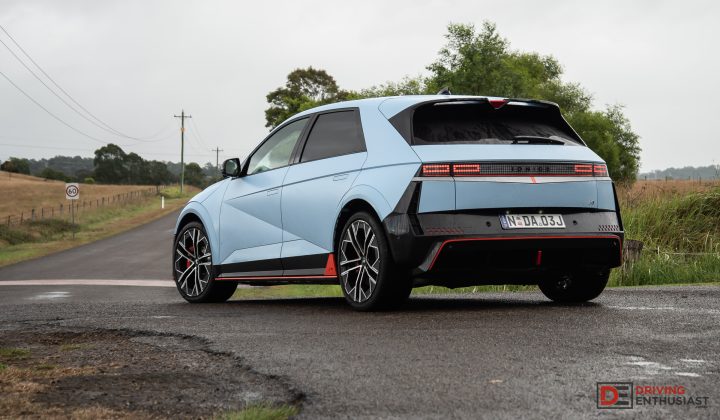
2025 Hyundai IONIQ 5 N: Specifications
Electrical: 84kWh battery, 2 x electric motors
Output: 448kW / 740Nm (478kW/770Nm N Boost mode)
Gearbox: Single-speed auto
Drive type: All-wheel drive (adjustable)
Wheels: F & R: 21×9.5, 275/35
ANCAP: Not tested
Kerb weight: 2230kg
Power-to-weight: 8.20:1 (kg:kW)
Official range (WLTP): 450km
Max charging AC/DC: 10.5kW/350kW0-60km/h: 2.07 seconds*
0-100km/h: 3.56 seconds*
0-200km/h: 11.55 seconds*
60-110km/h: 1.80 seconds*
1/4 mile: 11.56 seconds at 200.8km/h*
Max acceleration: 1.262g*
100-0km/h braking: 35.94m in 2.99 seconds*
Max deceleration: -1.511g*
Decibel at idle: 38*
Peak decibel at 60-100km/h: 85*
Starting price: $110,383
*Figures as tested by Driving Enthusiast on the day. Manufacturers’ claims may be different
2025 Hyundai IONIQ 5 N: How much does it cost?
Try finding another vehicle – new in 2025 – that covers the 0-100km/h sprint in a claimed 3.4 seconds for $110k or less. Yes, there are a few from some of the newly-arrived Chinese brands in Australia, but none of them offer the same sort of tuner-style track performance as this.
So, yes, prices start from $110,383 (excluding on-road costs), making it one of the most expensive Hyundai models ever. There are three optional extras; premium paint ($750), matt paint ($1000), and a Vision Roof ($4000).
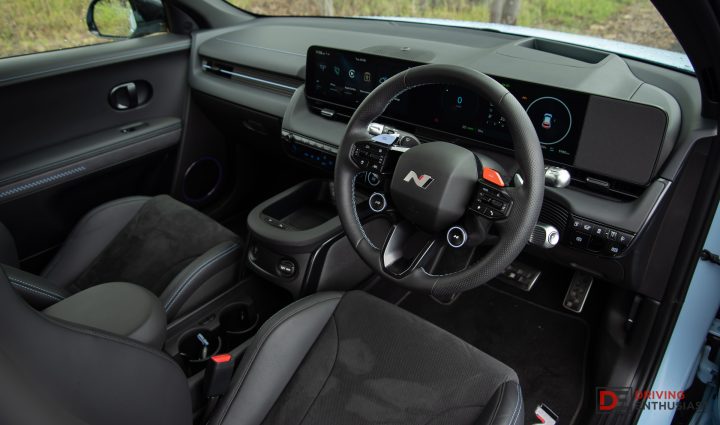
2025 Hyundai IONIQ 5 N: Interior & packaging
Inside, the IONIQ 5 N builds on the already spacious and futuristic cabin of the regular model, but adds a more focused, sporty atmosphere. You get a redesigned steering wheel with drive mode shortcuts, deeply-bolstered sports seats with a lowered seating position, and N-specific trimmings.
Twin 12.3-inch screens remain embedded on the dash but now feature bespoke graphics and menus for the various N settings. You’ve got every driver app you could possibly need, including acceleration timers, lap timers, adjustable torque-split including 100 per cent rear (basically RWD), and even different sound modes to select from – yep, this is an EV but you can choose futuristic spaceship sounds or classic computer-game car racing sounds.
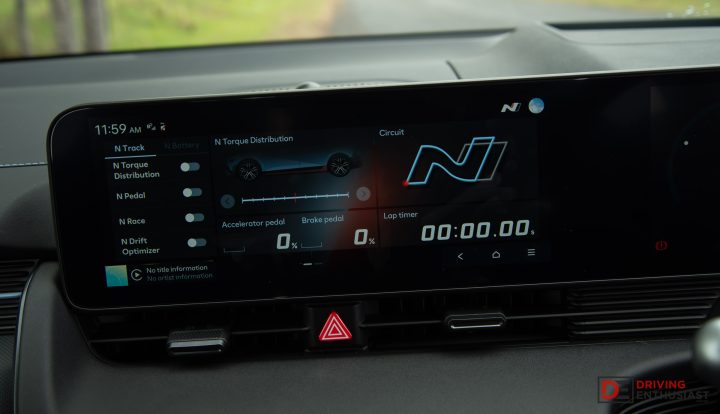
Build quality is good, though there are some hard plastics and basic-feeling recycled materials in places that should probably feel more premium for a $110k vehicle. And that could be a deal-breaker for some. You get all of the common and expected luxuries though, including ventilated seats, dual-zone climate, and a heated steering wheel.
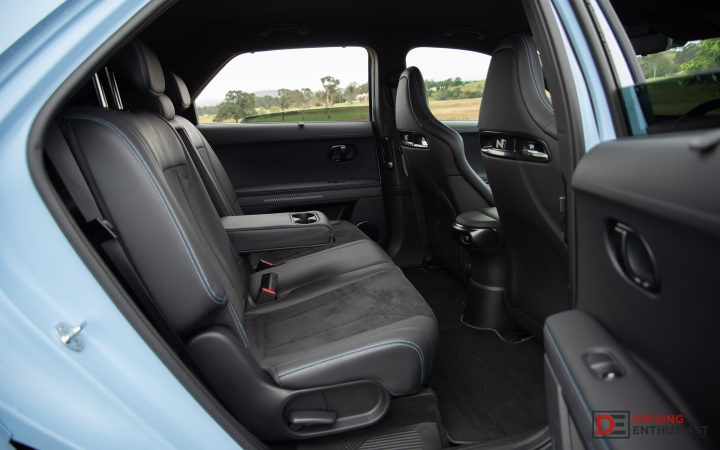
Practicality hasn’t been sacrificed too heavily for the sake of speed. Rear seat and boot space are still a standout for this class, with a completely flat floor providing excellent legroom and a great sense of spaciousness and freedom. It’s peaceful simply because it is so uncluttered.
You’ve also got a 480L boot up at the back which expands to 1540L when you fold down the rear seats. The N model misses out on the front boot under the bonnet because of the bigger electric motor here compared with the regular variants.
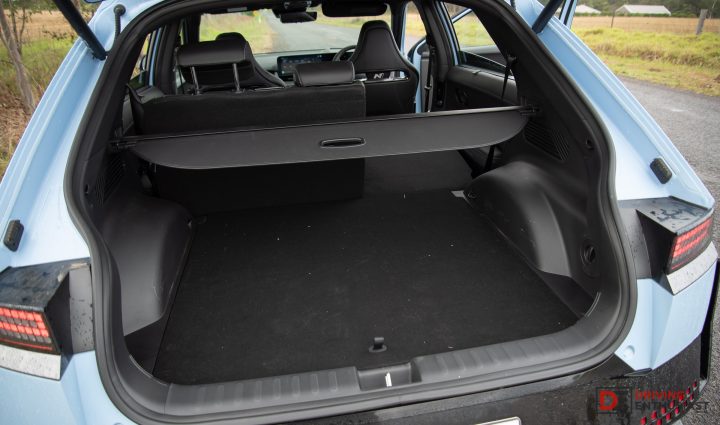
2025 Hyundai IONIQ 5 N: Powertrain & handling
Under the skin lies a dual-motor AWD setup pushing out up to 478kW and 770Nm (in N Grin Boost mode). That makes it the most powerful Hyundai ever. Power comes from an 84kWh battery (usable) and is managed through a suite of clever systems like N Torque Distribution, N Pedal, and N Drift Optimiser.
Acceleration is blistering, with 0–100km/h claimed in 3.4 seconds and our tests seeing a Vbox-verified 3.56 seconds with about 65 per cent charge. It also covered 0-200km/h in 11.55 seconds, and crossed the quarter mile in 11.56 seconds at 200.8km/h. It is one of the quickest five-seat, five-door vehicles currently on the market, outright.
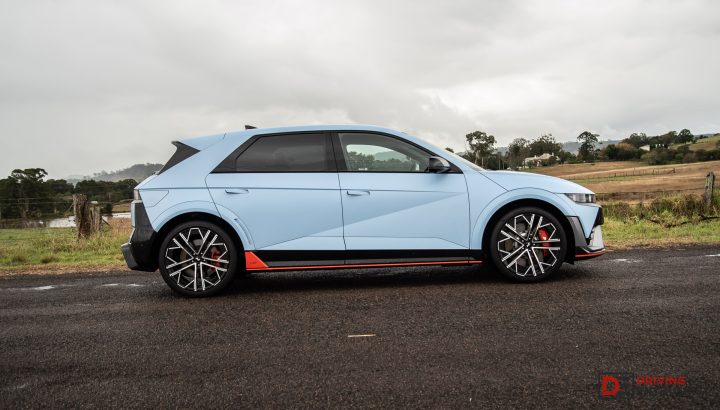
But what’s more impressive is how engaging this is once you hit the twisty stuff. Hyundai’s engineers have somehow managed to extract a level of playfulness rarely seen in EVs, partly (or mostly) thanks to clever torque vectoring, electronically controlled limited-slip diff, and adaptive dampers.
It’s a heavy car at 2230kg, but it hides it remarkably well. The chassis feels super-rigid and responsive, the steering is sharp enough (albeit a bit digital), and the fake shift logic with paddle-controlled simulated gears actually adds (or brings back) a sense of drama and building speed, like a combustion-engined vehicle.
Although synthetic “engine” sounds might seem gimmicky, and they are most of the time in our opinion, here, they do seem to enhance the driving experience and fun. Sure, you know they are fake, but when you’re using the artificial gear shifting, you need that reference point from sound to know when to ‘shift’.
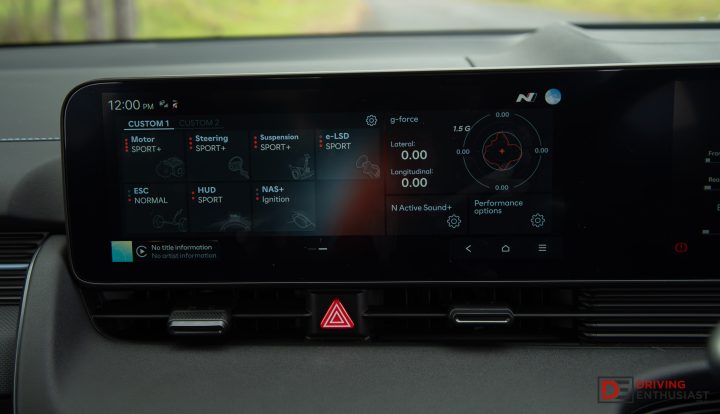
And it will actually bounce of a rev-limiter if you don’t shift. Hard to explain, but basically the vehicle is programmed so it won’t build any more speed until you ‘shift’ up. So each ‘gear’ is set to a specific speed, like a regular gearbox. It all sounds very complex and must have involved intense engineering to come up with, however, for you, the driver, it totally fools you into thinking it has a gearbox.
It’s a bit like playing a simulator computer game. You know you aren’t driving the vehicle on the screen but the rest of your body fully behaves like it is driving for real. Very similar here, except you are driving for real. And beside, these sounds and gearshifts inject character into what could’ve otherwise been a typically sterile EV experience.
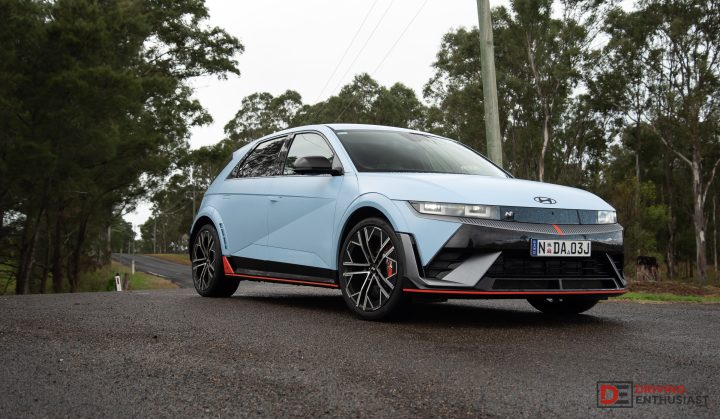
Braking performance comes courtesy of 400mm fully ventilated and floating front disc brakes, with 360mm discs on the back, clamped by four-piston monoblock front calipers and single-piston rear. You’ve also got regenerative braking which is capable of providing around 0.6G in stopping force alone. We clocked 100-0km/h in 35.94m.
Overall, having the N Grin Boost and the Track/Drift modes are standouts – not just for the novelty, but because they genuinely deliver on the promise of heightening driver enjoyment. The fact that you can attack a track, then drive home in comfort and still fit a family’s worth of gear, makes it even more compelling.
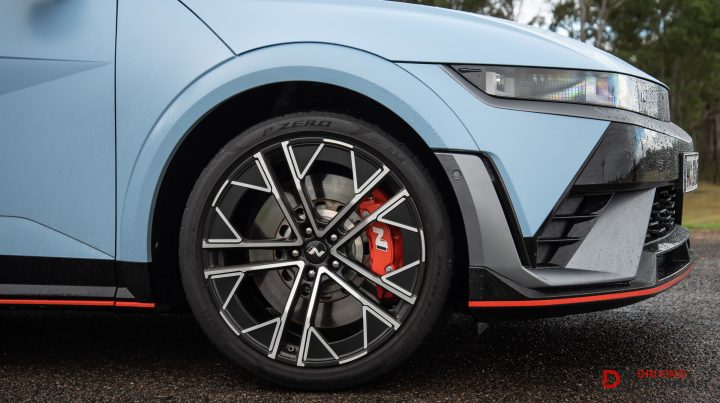
2025 Hyundai IONIQ 5 N: Key attractions/reasons to buy
- Genuine engagement: No other EV on sale brings this level of true drivers’ engagement as this.
- All-weather performance: Even with up to 478kW, you can drive this in the rain with no stress.
- Handling: This feels much lighter than the 2230kg figure, offering hot hatch agility and flatness around corners.
- Practical inside: Lots of space for four or five passengers, with plenty of storage and device-charging options.
2025 Hyundai IONIQ 5 N: Key considerations before you buy
- Price: Comparatively, in terms of performance and acceleration, the price is decent. But $110k is still going to be a big ask for a ‘Hyundai’ to some buyers.
- Steering feel is a bit too artificial: It’s not bad but it could be better.
- Heavy: Despite its ability to hide its weight in terms of driver feel, big weight like this is going to go through tyres pretty quick.
2025 Hyundai IONIQ 5 N: Videos
How does it rate against its rivals?
- Price
- Quality look & feel
- Interior tech
- Powertrain performance
- Ride & handling
- X factor (does it stand out in its class?)
Final word
The Hyundai IONIQ 5 N is a landmark performance EV that defies expectations. It’s not just fast, it is genuinely exciting to drive and packed with personality. For driving enthusiasts open to electric performance, this is one of the most rewarding and engaging options currently on sale.




